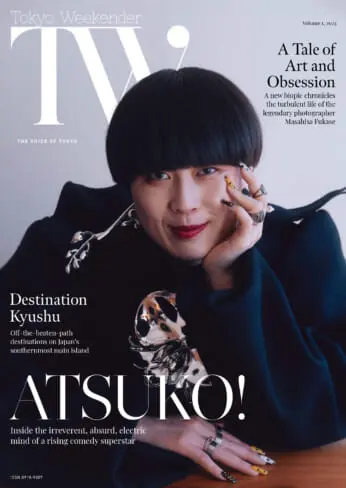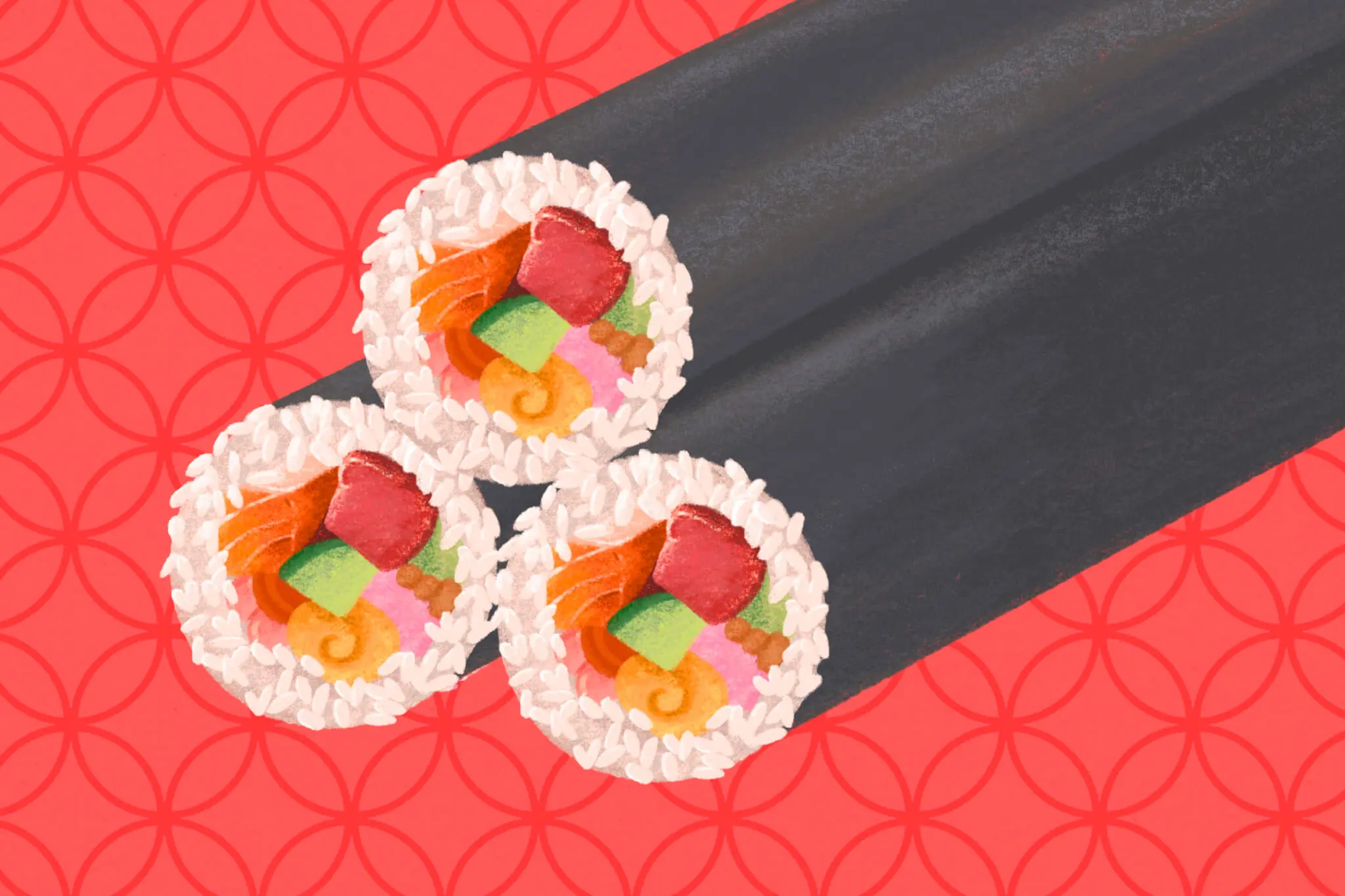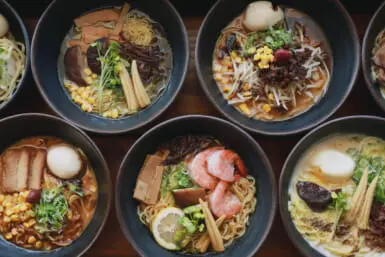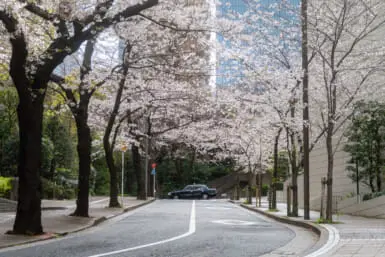Setsubun is an annual celebration held at the start of February. According to the Japanese lunar calendar, the festival marks the last day before the start of spring. With spring bringing blossoms and renewal, Setsubun is a chance to cleanse yourself of the winter blues and prepare your fortunes for the new season.
Though not a national holiday, Setsubun traditions and rituals have been practiced for centuries. One of the main traditions is mamemaki, or bean throwing. Roasted beans called fukumame are thrown out of doors and windows at private residences, to crowds of visitors at temples and shrines and at people wearing demon masks. Those doing the throwing accompany the action with shouts: “Oni wa soto! Fuku wa uchi!” The phrases translate to “Demons out! Fortune in!” and reflect an old belief that beans, like rice, possess spiritual powers and have the ability to ward off evil. Eating roasted soybeans is also said to bring good luck; you should eat the number of beans corresponding to your age, plus one more to ensure prosperity and fortune for the entire year.
The other popular Setsubun activity is making and eating ehomaki, or “lucky direction” sushi rolls. These aren’t your average sushi rolls. Not only are they considerably larger than a regular roll, containing approximately a bowl and a half to two bowls’ worth of rice on average (that’s upwards of 300 grams!), ehomaki have specific rules governing how they’re to be eaten: whole, in a single sitting, facing the designated auspicious direction (which changes yearly) and in silence so as not to let the good luck escape your mouth. But not to worry if eating 300 grams of rice plus filling feels like a bridge too far — smaller ehomaki are also available.
The challenge — and fun — of eating ehomaki is well documented online: You may have seen people post their attempts on social media, wolfing down ehomaki at impressive speeds in one go.
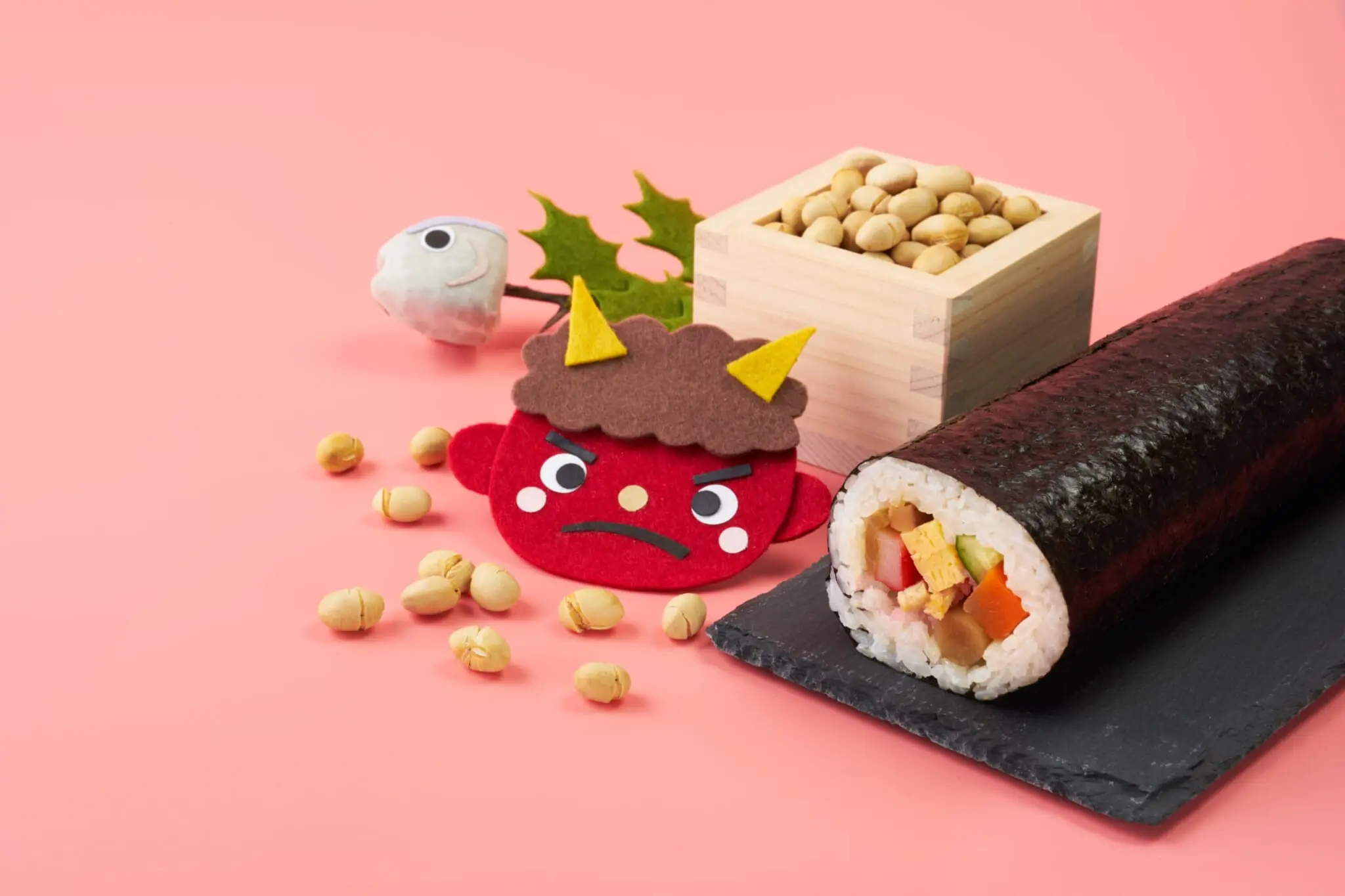
The History of Ehomaki
The origins of ehomaki are murky, but one theory states that ehomaki roots extend to the Edo and Meiji eras, when geisha and merchants in Osaka’s Hanamachi district are said to have enjoyed what were called maru-kaburi sushi or taimaki sushi to pray for prosperous business ventures.
In 1932, the Osaka Sushi Makers Union launched a marketing campaign promoting the idea of “maru-kaburi on Setsubun,” highlighting the rolls’ auspicious properties. Seaweed producers also supported the campaign as a great way to promote the sale of nori. Through the decades, ehomaki’s popularity only increased. By the 1970s and 1980s, department stores and konbini selling ehomaki around Osaka (and later nationwide) made the activity accessible and affordable for families, cementing the sushi rolls as one of the faces of Setsubun tradition.
The direction in which ehomaki are eaten changes every year and corresponds to the direction where the deity Toshitokujin — the Shinto god governing the delivery of the year’s good fortune — resides for the year. The year’s designated direction of residence is called “eho,” and eating ehomaki facing Toshitokujin is a way to invite more blessings into your life.
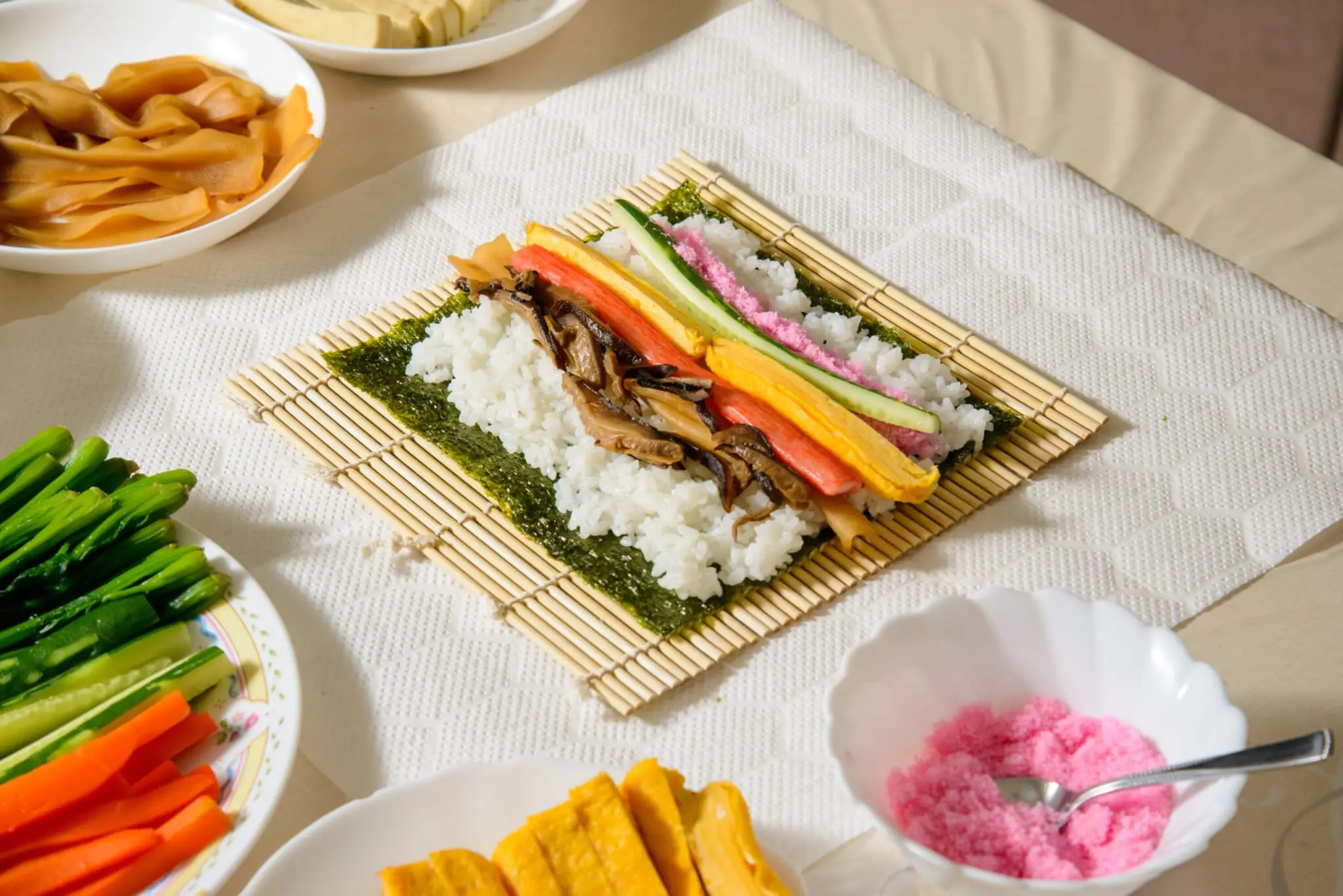
Meanings Behind Fortunate Fillings
Traditionally, ehomaki have seven different fillings, with each filling representing one of the Seven Gods of Fortune: Ebisu (integrity), Daikokuten (prosperity), Benzaiten (kindness), Bishamonten (dignity), Fukurokuju (popularity), Jurojin (longevity) and Hotei (generosity). Each of these deities gives their blessings through the ingredients that are all rolled up into one lucky roll. Here’s what each fortunate filling symbolizes:
Kampyo (Dried Calabash Gourd)
Kampyo are strips of dried gourd that are boiled in soy sauce and sugar for a sweet and savory taste. Because of their long shape, kampyo strips represent longevity and a healthy lifetime.
Shiitake
As the mushrooms can grow even on rotting hardwood trees, shiitake are symbols of prosperity and resilience. Their caps also closely resemble the domed shape of jingasa lacquered samurai helmets, offering further protection for those who eat them.
Datemaki Omelet
Datemaki are thick-rolled omelets. In Edo-era Nagasaki, datemaki were called castella kamaboko because of their sweet, almost cake-like flavor and texture. They’re commonly present in osechi (traditional New Year’s food), and are also a key ingredient in ehomaki. The egg’s rich yellow color mimics the sun, the light of life and gold. Japan has numerous connections to the sun, such as through the national flag, the imperial family, Shintoism and the country’s nickname: the land of the rising sun. Datemaki omelets stand for wealth and lifelong warmth through happiness.
Unagi (Conger Eel)
Unagi, or grilled conger eel, is considered an auspicious food said to bring vitality and strength. According to the Japanese lunar calendar, it’s also tradition to eat unagi on Doyo no Ushi no Hi (Midsummer Day of the Ox) to prevent illness during the hot, grueling months of summer.
Sakura Denbu (Shredded Whitefish)
Made from shredded whitefish — usually sea bream or cod — sakura denbu gets its name from the bright pink color added to the fish that makes it resemble fallen cherry blossoms. Sea bream holds particular importance in Japan as an essential part of many traditional events and special occasions, as it’s thought to be a lucky charm. Additionally, inspired by the transient beauty of cherry blossoms, sakura denbu is a reminder to live in the moment.
Shrimp
Because of their curved shape mimicking a hunched back and their long “beard” antennae, shrimp are representative of the elderly and living a long, healthy life.
Cucumber
Cucumbers are included in ehomaki thanks to wordplay. The Japanese word for cucumber, kyuri, can be broken down as “kyuu” and “ri” — meaning “nine benefits.” As a refreshing vegetable, cucumbers are also associated with nature, growth and health.
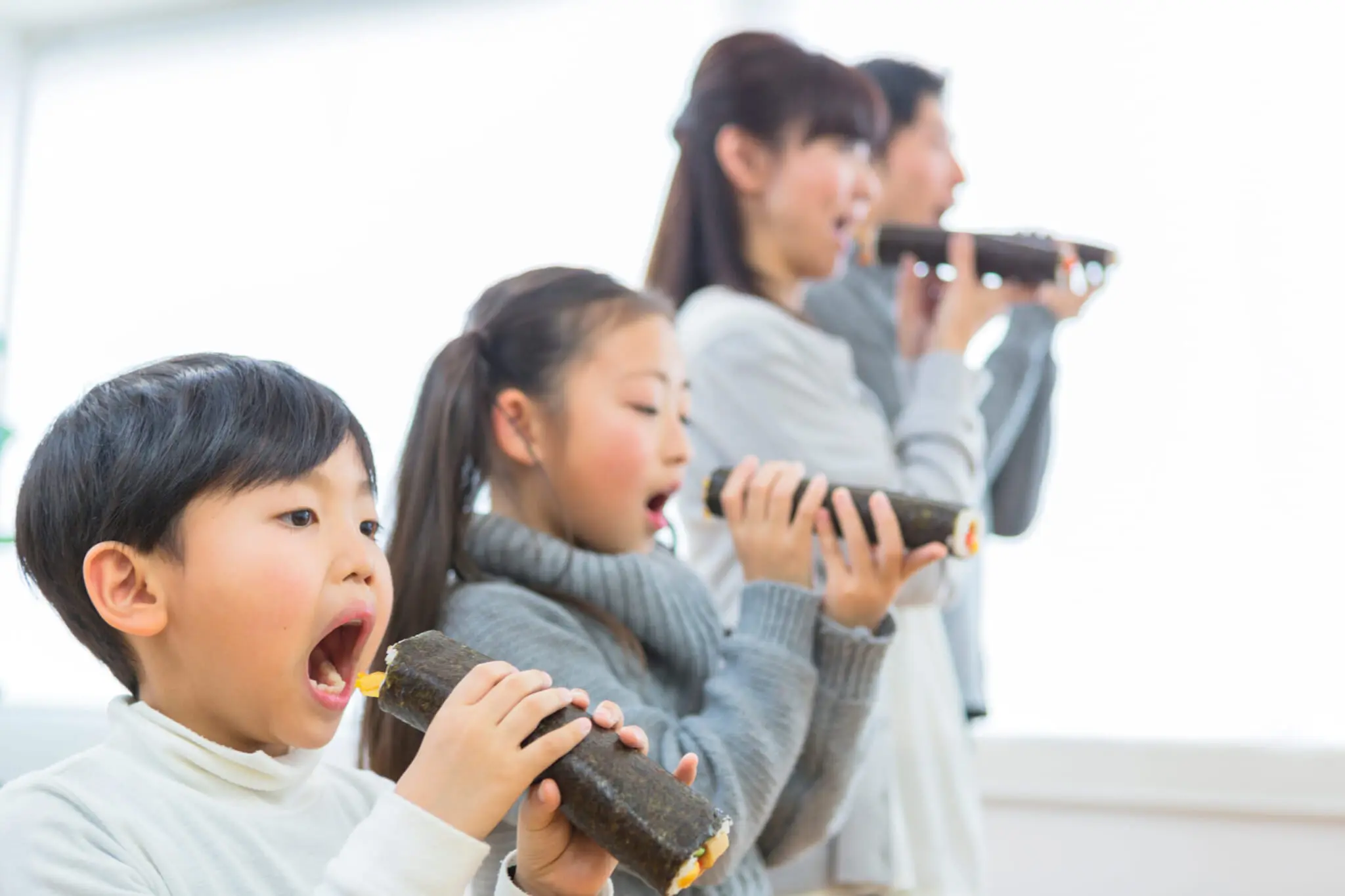
Where To Get Ehomaki
These days, a wide variety of ehomaki are available from many different sources. Fillings don’t necessarily have to be the traditional seven listed above; in fact, there are even some inventive dessert ehomaki. Many families also make homemade ehomaki together as part of their own annual bonding tradition. If you’re looking for delicious and convenient ready-made rolls though, there’s no shortage of places offering unique options.
The easiest ehomaki pit stop is the always reliable convenience store. Family Mart, 7-Eleven, Lawson and Mini Stop all have their own takes on the Setsubun roll. Varieties include rolls filled with wagyu beef, salmon roe and seared tuna. 7-Eleven is even offering a special salad ehomaki in collaboration with Chiikawa, a popular character series. With konbini rolls starting at around ¥300, they’re affordable and easy-to-acquire options.
Department stores, train stations and supermarkets, including Takashimaya and AEON, also offer a wide selection of ehomaki. These rolls often have more luxurious ingredients like crab and unagi. If you have more of a sweet tooth, you can opt to skip the sushi altogether and replace the ehomaki with a roll cake. Bakeries generally have roll cakes year-round, but some go the extra mile at Setsubun to make them resemble sushi rolls, like Granduo Kamata, which sells an ehomaki roll cake — a delectable assemblage of strawberries, custard and whipped cream wrapped up in a cocoa-covered crepe in place of nori.
